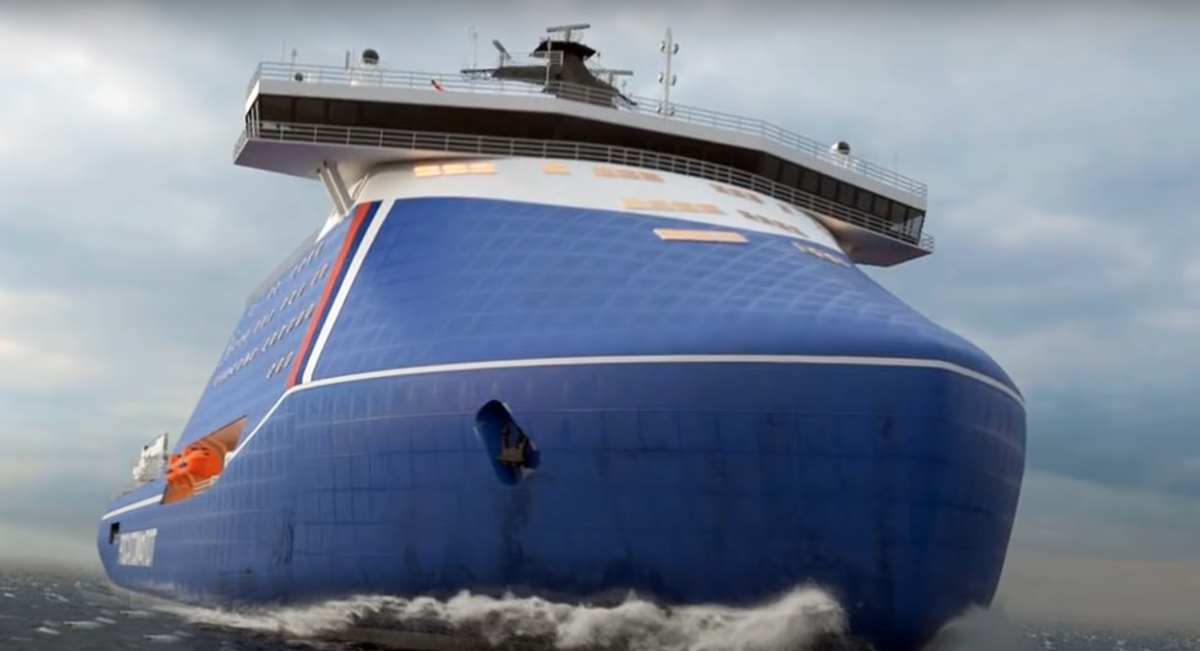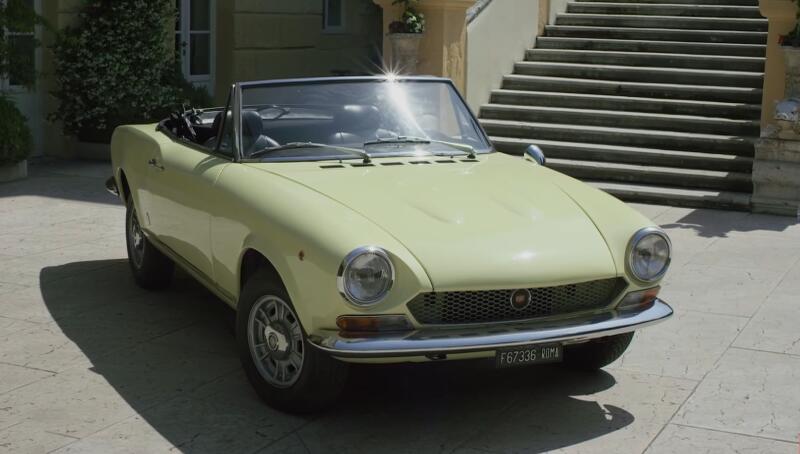Financing for the construction has already begun and will continue until the delivery of the vessel in 2027. The new icebreaker will cost a fabulous sum - 127 billion 577 million rubles. For example, ships of this type of project LK-60Ya being built today require investments of 50 billion rubles.
Why do we need such an icebreaker?
The project has its skeptics. In their opinion, many modern tankers and gas carriers have the Arctic Arc7 class, thanks to which, under certain conditions, ships can independently make their way through the ice. If necessary, existing icebreakers will help them. And there are examples of such penetrations of the Northern Sea Route, including in the eastern direction. But such vessels cannot navigate high-latitude routes all year round. And the creation of a regular line "Asia-Europe-Asia" implies just such a mode of operation.
Therefore, if Russia wants to "stake out" its permanent presence in the Arctic, a "year-round" icebreaker is needed. It will be able to navigate ships 35-40 meters wide with a deadweight (payload without the weight of the ship itself) up to 200 tons along the Northern Sea Route. It is assumed that the main "clients" of the "Leader" will be tankers and gas carriers. Depending on weather conditions and ice conditions, the passage of the entire Northern Sea Route will take from 15 to 20 days.
To make the route regular, according to calculations, at least three Leader class ships will be needed, which will be implemented by the thirties (the last one is planned to be commissioned in 2033). For comparison: the length of the traditional southern route from Europe through the Suez Canal to, for example, Japan, is 23 thousand km, and through the Northern Sea Route - 14 thousand km. Today, Russia's icebreaker fleet, given its vast territory, is not so big - only 8 icebreakers, of which only 4 are nuclear. Of the remaining others, two are used for laying routes in the mouths of rivers.
An important design feature of the new ship is the ability to install artillery and missile weapons on it, which was not practiced in previous projects.
The advantage of the "Leader" lies not only in its power and length, autonomy, but also in its width. This is as much as 46 meters! Such dimensions mean that the icebreaker will be able to carry not one ship, but a whole caravan of large-capacity vessels. For example, the Arktika currently in service has a width of 33 m. But you should not directly compare the dimensions of a gas carrier and an icebreaker. The free strip of water formed behind it is much wider. But the narrower the icebreaker, the less time it remains clean, because it freezes and closes.
When it became necessary to guide the Christophe de Margerie gas carrier through the ice, the Russian ship Yamal helped him. However, the width of this icebreaker is only 30 m, and the width of the slave ship is 50 m. Nevertheless, the voyage was successfully completed.
The icebreaker is being built at the Zvezda Far East complex, near the town of Bolshoy Kamen, 30 km from Vladivostok. The choice is not accidental: this is the largest shipyard in Russia, others are simply not suitable for building a giant. Why is Leader so interesting in technical terms?
Icebreaker characteristics
According to the terms of reference, the ship must overcome ice up to four meters thick. To achieve this "strength", the ship's hull is made of clad (two-layer) steel grades. In this case, the average speed of a constant stroke is set to 12 knots. The wiring of large-tonnage ships implies the presence of a wide hull. The customer also presented requirements for the resource of the vessel, which should be at least 40 years. Main parameters:
- ? length, width - 209 and 47,7 m
- ? displacement - 69,7 thousand tons
- ? draft - 13 m
- ? maximum speed - 22 knots
- ? maximum thickness of passable ice - up to 4 m
- ? crew size - 130 people
The power plant is a pair of nuclear reactors developing a power of 120 MW (fuel replacement period from 5 to 7 years), plus four turbines and 4 electric motors. The duration of autonomous navigation is at least 240 days. Like all ships of this class, the "Leader" has a high superstructure, part of the area on the bow is completely closed.
At the back there is a platform for helicopters and places for the possible installation of weapons or research equipment. The ship will be equipped with everything necessary in terms of comfortable life and leisure. In addition to the crew, the icebreaker can take on board scientists and other passengers.
Chassis
It is worth noting especially: the ship has an internal structure unusual for icebreakers. It provides for the installation of completely different frames (“ribs” dividing the ship across into compartments). The complication of the hull shape will increase the vessel's permeability in ice. When compressed by them, it will not be crushed, but will simply be forced upward
What work is being done at the Zvezda dock?
The shipyard will manufacture an ice-pressure-resistant hull, on which the superstructure and equipment will be partially mounted. These are two steam turbine units (there are four in total) and a nuclear reactor. After the icebreaker leaves the stocks, a second pair of engines will be installed. The next stage will consist of mooring, and then sea trials. Then the ship will pass by the Northern Sea Route to its home port - Murmansk.
Due to such a large order, the Zvezda shipbuilding complex is completing the necessary infrastructure. As of today, the block of production facilities for processing metals, assembling sections of ships is completely ready and functioning, and a paint shop has been put into operation. Now the premises for the manufacture of protection elements for the icebreaker's hull and its reactor are being completed. The general shipyard modernization program is designed until 2024.
Along with the improvement of the infrastructure of the plant, the construction of ships continues. It is not out of place to recall: the shipyard's portfolio of orders now includes 59 units of water transport. Of these, 28 ships were ordered by Rosneft. And this is not only ships - Zvezda makes offshore platforms, as well as equipment that was not previously manufactured in the Russian Federation due to the lack of powerful hydraulic engineering complexes.
Where else are icebreakers built?
It would be a mistake to think that, apart from the Russian Federation, ships capable of sailing in extreme latitudes are not made anywhere. One of the countries with access to the Arctic is Canada. The largest icebreaker is the John Diefenbaker with a displacement of 23,5 thousand tons and a length of 150 m. The ship is driven by 5 diesel engines, the thickness of the broken ice is up to 2,5 m. In England there is the Attenborough ship and the coast guard ship Porlar Star" in / and 14 thousand tons. The Swedes and Norway have icebreaking tugs - 3 pcs. The latter has recently acquired the "Crown Prince Hakon", capable of making tracks with an obstacle thickness of no more than a meter.
Icebreakers are being built in China, Australia and Chile, and in South Africa there is already a ship with a capacity of 14 tons. As for the United States, they are still arguing about the advisability of building large ships of this class. It is obvious that in terms of power and "capabilities" these ships did not even come close to the characteristics of the Russian Arctic ships. It should be added to this that nuclear icebreakers, apart from Russia, are not built by any country in the world.
















